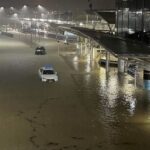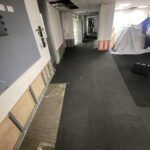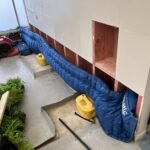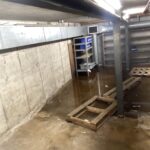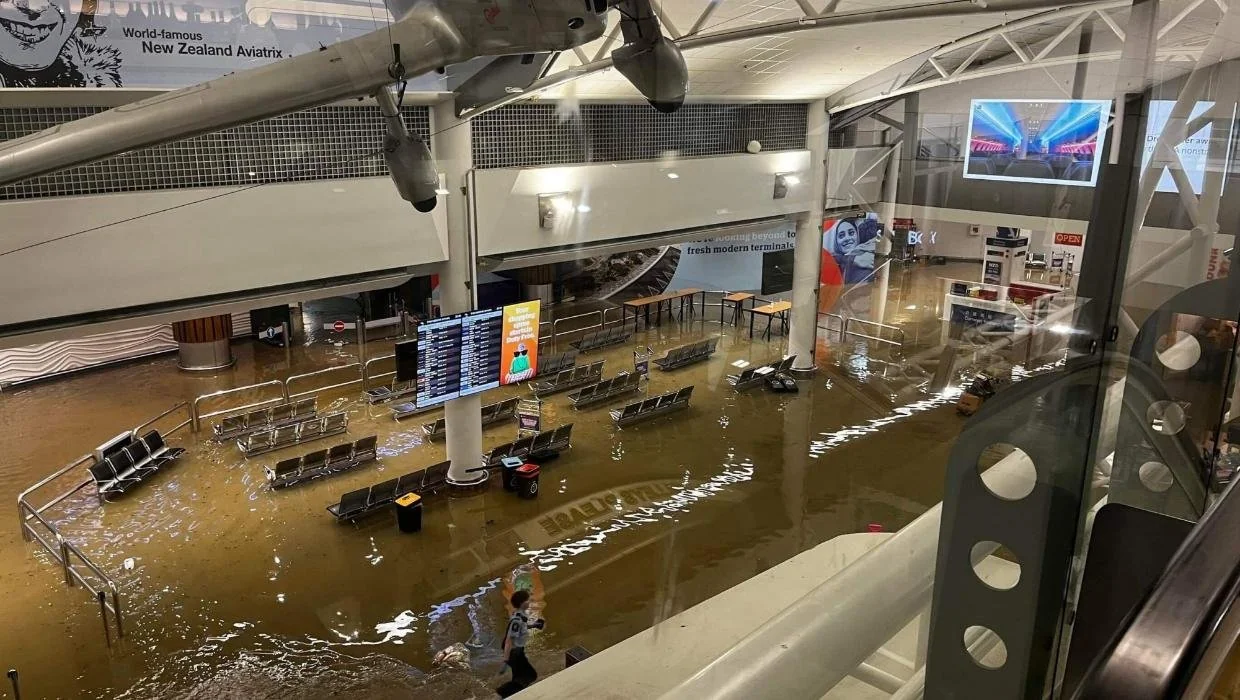Client:
Services Provided:
Auckland International Airport
Moisture Inspections, Insurance Reporting, Drying of Structure & Materials
BACKGROUND
Beginning on Friday, 27 January 2023, regions across the upper North Island of New Zealand experienced widespread catastrophic flooding. At that time, stranded passengers described the international airport as a “war zone” and “zombie land”, with flights canceled and more than 1000 displaced people walking around or sleeping on the floor.
As a result of the flood event critical infrastructure, including runways, terminals, and support structures, suffered extensive damage. NZ’s tourism industry was at risk, as was the commercial viability of the businesses operating in the airport: the heat was on to get the airport back up and running as soon as possible.
RESTATE was called in to support the remediation works and get New Zealand and its businesses open to the world again.
THE CHALLENGE
- There were multiple onsite challenges, including coordination between the landside (unsecure) and the airside (secure) operations to remain open while work was carried out.
- Security access was required for multiple staff to get access to works on the airside.
- There were large open and uncontrolled atmospheres where creating conventional drying chambers was impossible, while delays in the removal of materials caused deeply bound moisture in the structure of the buildings.
- Environmental and industrial forensic consultants were employed to recommend drying and antimicrobial scopes.
- The retail tenants of the airport required a quick resolution to continue trading and low interruption of service.
- As each section of the building was opened to the framing, installation of drying equipment was expected to be speedy in order to reinstatement phase ASAP.
- Reporting, area sign offs and communications were all time sensitive, requiring administrative efforts to be seamless.
- The mobilisation of equipment to site was a major component of this job, with over 120 pieces of equipment required within the first few days to ensure the mitigation of damages.
- The Auckland airport consists of two terminals and houses retail tenancies, airline offices, restaurants, cafes, logistics companies, car rental stores and government agencies, to name a few. Each entity had different operational structures and security access, and any delays meant deeply bound water and potential mould growth.
- The priority was to control the environment and subdue microbial growth, dry non-replaceable material as fast as possible before being treated and reinstated.
- Power access was not simple as much had been disconnected, so communications with the electrical team around what power would be necessary had to be clear and precise.
- In order to ensure security was not jeopardised, only one side of the adjoining walls could be done at a time. This slowed drying times and required more comprehensive and specialised drying solutions.
THE SOLUTION
- As soon as the airport gave the green light while RESTATE mobilised the necessary equipment we started inspecting and reporting within 24-hours. The bulk of the equipment was installed over a 48-hour period.
- Reporting and inspections were ongoing from the start to the end, which was over 12 months or more.
- Working within the security and operational restrictions, we were able to supply enough drying equipment to support the drying efforts as soon as we had clearance and approval to do so.
- As new areas became available over the next 6 months to start drying, we increased our equipment levels to suit the demand.
- No proprietary tech was used here. The industrial environmental consultant specified using high-velocity air movers and heat drying equipment applied directly to the material.
- We also employed the use of custom-built containment to reduce drying chamber sizes. This enabled us to dry larger areas with less equipment.
- The team was not very large to get this done; at most, we would have utilised 6 RESTATE staff. However, we also collaborated with building crews and airport staff to enable more equipment movement within the airport, specifically the secure airside areas.
- As the airport’s operational function is essentially 24/7, some areas can only be accessed outside typical hours and/or when not in use. This means that when they told us we could access the area, we made sure we were there to do what we needed to do.
RESULTS & OUTCOMES
- As issues were brought up, RESTATE were able to adjust accordingly. It was not a case of speed in many cases but addressing the needs and wants of many stakeholders.
- Start to finish the functionality of the airport was the primary focus – it had to remain operational throughout RESTATE’s time there and to provide solutions that made sense and were of the least impact to the various stakeholders.
RESTATE’s work to move fast kept the businesses and its tenants commercially viable; ensuring limited impact on operations.
